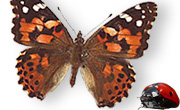Fax: (916) 381-4006



Live Bacteria & Fungi Specimens |
 Bacteria (singular: bacterium) are a major group of living organisms. The term "bacteria" has variously applied to all prokaryotes or to a major group of them, otherwise called the eubacteria, depending on ideas about their relationships. Here, bacteria is used specifically to refer to the eubacteria. Another major group of bacteria (used in the broadest, non-taxonomic sense) are the Archaea. The study of bacteria is known as bacteriology, a subfield of microbiology. Bacteria (singular: bacterium) are a major group of living organisms. The term "bacteria" has variously applied to all prokaryotes or to a major group of them, otherwise called the eubacteria, depending on ideas about their relationships. Here, bacteria is used specifically to refer to the eubacteria. Another major group of bacteria (used in the broadest, non-taxonomic sense) are the Archaea. The study of bacteria is known as bacteriology, a subfield of microbiology.
Bacteria are the most abundant of all organisms. They are ubiquitous in soil, water, and as symbionts of other organisms. Many pathogens are bacteria. Most are minute, usually only 0.5-5.0 μm in their longest dimension, although giant bacteria like Thiomargarita namibiensis and Epulopiscium fishelsoni may grow past 0.5 mm in size. They generally have cell walls, like plant and fungal cells, but bacterial cell walls are normally made out of peptidoglycan instead of cellulose (as in plants) or chitin (as in fungi), and are not homologous with eukaryotic cell walls. Many move around using flagella, which are different in structure from the flagella of other groups. If you like this saying...."Everyone needs a Little Culture" we have Tasha's t-shirts available for sale. They are available in adult sizes from small to XL. Tasha's T-ShirtsTo order please call 916-386-2665 Small - $29.95 Medium - $29.95 Large - $29.95 XL - $29.95 XXL - $31.95 All prices include shipping and handling. A fungus (plural fungi) is a eukaryotic organism that digests its food externally and absorbs the nutrient molecules into its cells. Fungi are used extensively by humans: yeasts are responsible for fermentation of beer and bread, and mushroom farming is a large industry in many countries. Fungi are the primary decomposers of dead plant and animal matter in many ecosystems, and are commonly seen on old bread as mold. However, the complex biology of fungi extends beyond this common knowledge and experience of them. Originally classified as plants, fungi are not at all plants, because they are heterotrophs (they do not fix their own carbon through photosynthesis but use the carbon fixed by other organisms). Indeed, fungi are now thought to be more closely related to animals than to plants, and are placed together with animals in the monophyletic group of opisthokonts. However, unlike animals, fungi absorb their food rather than ingest it, and their cells have cell walls surrounding them. For these reasons, these organisms are placed in their own kingdom, Fungi. Molds, or mould, are various fungi that cover surfaces in the form of fluffy mycelia and usually produce masses of spores (most commonly asexual spores but sometimes sexual). Mold is a growth of these minute fungi forming on vegetable or animal matter, commonly as a downy or furry coating. It is often a sign of decay or dampness. The Molds are not a specific taxonomic or phylogenetic grouping – they can be found in the divisions Zygomycota, Deuteromycota and Ascomycota. The presence of mold usually implies decay, although some molds are cultivated deliberately; for example in making certain types of cheese, and for the production of antibiotics derived from the organisms' natural defenses against bacteria. Please allow 1-2 weeks for us to culture these items before we can ship. |
| Featured Items |
|---|
| Penicillium notatum - Tub... |
|
We have plates available also for $16.00, please call for availability. Plea... |
|
Read more »»»
$13.00 (Buy Now) |
|---|
| Physarum (Sclerotium) - E... |
 Slime molds are peculiar protists that normally take the form of amoebae, but under certain conditions develop...
Slime molds are peculiar protists that normally take the form of amoebae, but under certain conditions develop... |
|
Read more »»»
$16.00 (Buy Now) |
|---|
9298 Elder Creek Road
Sacramento, CA 95829
(916) 386-2665
9298 Elder Creek Road
Sacramento, CA 95829
(916) 386-2665